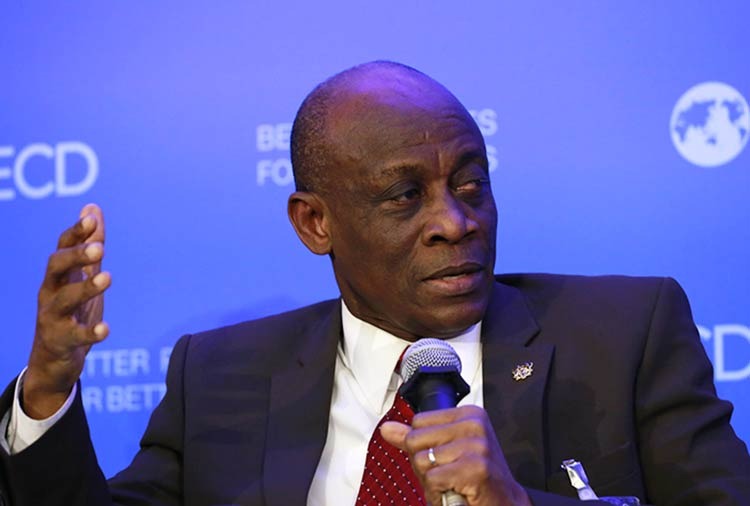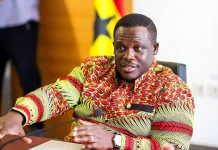
Ghana reached a major milestone on October 4, 2017 after using US$200 million of its oil and gas resources from a Sinking Fund account as well as proceeds from previous Bond issues to “buyback” or redeems the last instalment of the 10-year Sovereign Bond issued in 2007. The decision to progressively retire the US$ 750 million bond before maturity—with a package of “buyback” and refinancing strategies—was taken in 2013, as part of the Home Grown policy. This Bond was also the first to be issued on a foreign capital market by a Sub-Saharan African nation, besides South Africa.
Cabinet and Parliament approved the measure as part of the 2014 Budget to avoid retaining the full value to maturity in October 2017. Back then, Ghana faced significant “roll-over” risks since it did not set up a plan to repay the principal sum under the Bond’s half-yearly “interest-only” payment or “bullet” structure.
Measures being used to pay down the 2017 and other Bonds
In the absence of a fiscal plan to create reserves to repay the principal sum when it fell due on October 4, 2017, investors expected Ghana to go to the markets to raise funds to refinance or roll-over the Bond. This was becoming difficult because of continuing fall in commodity prices, huge fiscal overruns, and stoppage of gas supply from Nigeria. Hence, the need for a progressive plan in the new Debt Management Strategy (DMS) to retire the Bond fully on due date.
Sinking Fund and Buyback: The Sinking Fund flows used to retire part of the Bond was from oil revenues in the Stabilization Fund set up under the Petroleum Revenue Management Act (PRMA), (Amendment) 2015 (Act 893). Further, the October 4 final instalment was from a Sinking Fund transfer into a Debt Service Reserve (DSR) account for retiring Bonds to support debt repayment and improve yields. Overall, Ghana had used US$336 million of the Sinking Fund by December 2016 to buyback the 2007 and other domestic and foreign debt.
Refinancing: Ghana also used US$100 million of the 2014 and US$216 million of the 2016 Bond proceeds to augment the retirement of the 2007 Bond, through a liability management or exchange plan for its new and old bonds. It is important to note that the bulk of the amount for overall domestic and foreign debt exchange and “buyback” came from the US$1billion worth of Bond that the World Bank guaranteed in 2015.
Soft-amortization: At end-2016, Ghana’s last “bullet” was the 2013 Bond. Those of 2014 to 2016 fall under a soft-amortization plan—under which, instead of the 1-year “bullet” payment, the maturity periods were extended by 3-to-5 years. This is to enable Ghana redeem/buyback or refinance the principal sum gradually from the Sinking Fund.
Hence, Ghana has been able to extend the maturity for the 2014 to 2016 bonds to 2030 and expects to cover 75 percent or more of the annual average obligation of US$300 million from the Sinking Fund and flows from commercial projects under the DSR’s “self-financing” plan.
Enabling laws (PRMA and PFMA)
The arrangements described above are now backed by law, a move that now makes our debt management plans certain on the capital markets where Ghana trades its bonds. As noted, the Stabilization Fund falls under the PRMA, 2011 (Act 815) while Parliament approved the annual limit or cap on this Fund to set up the Sinking Fund—as well as the Contingency Fund, established under Article 177 of the Constitution and funded for the first time since it came into force in 1992.
The laws supporting the Sinking Fund are Article 176(2) of the Constitution and the new Public Financial Management Act (PFMA), 2016 (Act 921). Originally, the Sinking Fund was set up in 2014 under the Financial Administration Act and Regulations (FAA and FAR). The PFMA now has more comprehensive provisions on the Sinking Fund and DSR account, among other debt management provisions.
Conclusion—Making our debt sustainable
While Ghana appears to have its back against the wall, we canl point the right signals to the Capital Markets through these policies. The buyback-cum-refinancing of the 2007 Bond and, ultimately, the debt management provisions in the PFMA and PRMA hold the key to making Ghana’s fast-growing public debt more sustainable. We cannot achieve this goal by focusing on deficit reduction as sole or overriding fiscal anchor.
These redemption plans form part of the new DMS—or its more appealing street name: “smart borrowing”. We must continue to build the Sinking Fund from additional crude oil and gas revenues—and investments under the World Bank Partial Risk Guarantee (PRG) for Sankofa—to make our debt sustainable.
In the Budget, we cannot devote these resources to consumption only; learning from the advanced and middle-income countries, what also matters is infrastructure development through careful debt management.
We must augment the Sinking Fund with other measures, notably the “self-financing” strategy that requires that we repay loans from the revenues generated by commercial projects and not put the burden on the taxpayer. We must establish the Debt Management Office (DMO) proposed in the PFMA to implement these proposals—to make our debt sustainable again.
By Seth E. Terkper (immediate past Finance Minister)























